Audi Q3 vs Toyota Yaris – Which model is better for everyday use?
Everyday use, family trips or long-distance drives – here’s where the differences show.
Discover whether Audi Q3 or Toyota Yaris fits your lifestyle better.
Costs and Efficiency:
When it comes to price and running costs, the biggest differences usually appear. This is often where you see which car fits your budget better in the long run.
Toyota Yaris has a significantly advantage in terms of price – it starts at 21900 £, while the Audi Q3 costs 38200 £. That’s a price difference of around 16371 £.
Fuel consumption also shows a difference: Audi Q3 manages with 1.70 L and is therefore decisively more efficient than the Toyota Yaris with 3.80 L. The difference is about 2.10 L per 100 km.
Engine and Performance:
Power, torque and acceleration say a lot about how a car feels on the road. This is where you see which model delivers more driving dynamics.
When it comes to engine power, the Toyota Yaris has a hardly perceptible edge – offering 280 HP compared to 272 HP. That’s roughly 8 HP more horsepower.
In acceleration from 0 to 100 km/h, the Toyota Yaris is minimal quicker – completing the sprint in 5.50 s, while the Audi Q3 takes 5.70 s. That’s about 0.20 s faster.
In terms of top speed, the Audi Q3 performs barely noticeable better – reaching 240 km/h, while the Toyota Yaris tops out at 230 km/h. The difference is around 10 km/h.
There’s also a difference in torque: Audi Q3 pulls minimal stronger with 400 Nm compared to 390 Nm. That’s about 10 Nm difference.
Space and Everyday Use:
Beyond pure performance, interior space and usability matter most in daily life. This is where you see which car is more practical and versatile.
Both vehicles offer seating for 5 people.
In curb weight, Toyota Yaris is convincingly lighter – 1090 kg compared to 1635 kg. The difference is around 545 kg.
In terms of boot space, the Audi Q3 offers clearly more room – 488 L compared to 286 L. That’s a difference of about 202 L.
In maximum load capacity, the Audi Q3 performs distinct better – up to 1386 L, which is about 451 L more than the Toyota Yaris.
When it comes to payload, Audi Q3 hardly perceptible takes the win – 535 kg compared to 525 kg. That’s a difference of about 10 kg.
Who comes out on top?
Overall, the Audi Q3 shows itself to be leaves the rival little chance and secures the title of DriveDuel Champion.
It convinces with the more balanced overall package and proves to be the more versatile choice for everyday use.
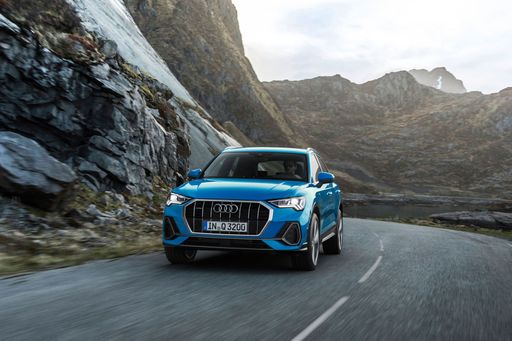
Audi Q3
Audi Q3
The Audi Q3 seamlessly blends practicality with luxury, making it an ideal choice for urban dwellers and adventure seekers alike. With its striking design and sophisticated interior, the Q3 offers a premium driving experience that caters to both comfort and style. As a compact SUV, it effortlessly navigates through city streets while providing ample space for passengers and cargo.
details @ audi-mediacenter.com
@ audi-mediacenter.com
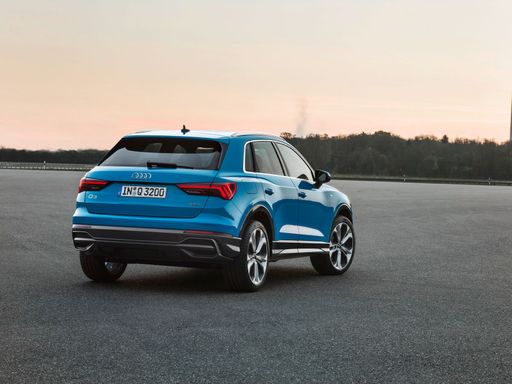 @ audi-mediacenter.com
@ audi-mediacenter.com
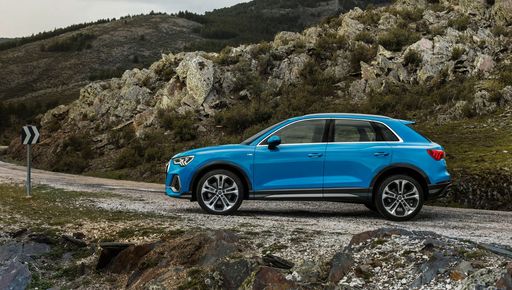 @ audi-mediacenter.com
@ audi-mediacenter.com
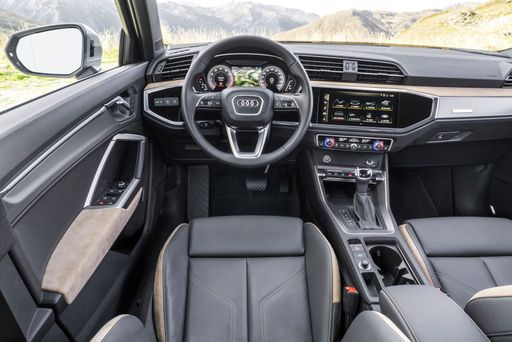 @ audi-mediacenter.com
@ audi-mediacenter.com
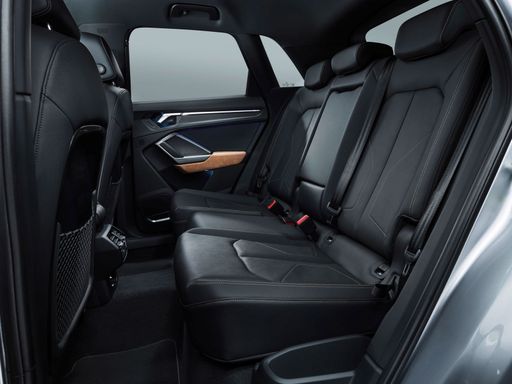 @ audi-mediacenter.com
@ audi-mediacenter.com
Toyota Yaris
The Toyota Yaris exudes a charming blend of practicality and style, making it an appealing choice for urban drivers. Its compact design allows for easy manoeuvrability in crowded city streets, while the interior offers a surprisingly spacious and comfortable environment. With a focus on fuel efficiency and reliability, the Yaris remains a popular option for those seeking a balance between performance and economy.
details @ Toyota
@ Toyota
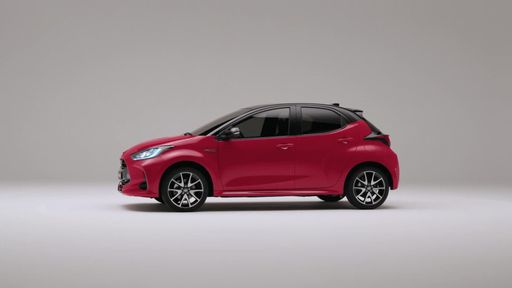 @ Toyota
@ Toyota

|

|
|
|
|
Costs and Consumption |
|
|---|---|
|
Price
38200 - 52900 £
|
Price
21900 - 46700 £
|
|
Consumption L/100km
1.7 - 8.6 L
|
Consumption L/100km
3.8 - 9.5 L
|
|
Consumption kWh/100km
-
|
Consumption kWh/100km
-
|
|
Electric Range
118 - 119 km
|
Electric Range
-
|
|
Battery Capacity
19.70 kWh
|
Battery Capacity
-
|
|
co2
39 - 195 g/km
|
co2
87 - 215 g/km
|
|
Fuel tank capacity
45 - 60 L
|
Fuel tank capacity
36 - 50 L
|
Dimensions and Body |
|
|---|---|
|
Body Type
SUV
|
Body Type
Hatchback
|
|
Seats
5
|
Seats
4 - 5
|
|
Doors
5
|
Doors
3 - 5
|
|
Curb weight
1635 - 1900 kg
|
Curb weight
1090 - 1356 kg
|
|
Trunk capacity
375 - 488 L
|
Trunk capacity
141 - 286 L
|
|
Length
4531 mm
|
Length
3940 - 3995 mm
|
|
Width
1859 mm
|
Width
1745 - 1805 mm
|
|
Height
1559 - 1601 mm
|
Height
1455 - 1500 mm
|
|
Max trunk capacity
1196 - 1386 L
|
Max trunk capacity
935 L
|
|
Payload
505 - 535 kg
|
Payload
289 - 525 kg
|
Engine and Performance |
|
|---|---|
|
Engine Type
Petrol MHEV, Petrol, Plugin Hybrid, Diesel
|
Engine Type
Full Hybrid, Petrol
|
|
Transmission
Automatic
|
Transmission
Automatic, Manuel
|
|
Transmission Detail
Dual-Clutch Automatic
|
Transmission Detail
CVT, Manual Gearbox, Automatic Gearbox
|
|
Drive Type
Front-Wheel Drive, All-Wheel Drive
|
Drive Type
Front-Wheel Drive, All-Wheel Drive
|
|
Power HP
150 - 272 HP
|
Power HP
116 - 280 HP
|
|
Acceleration 0-100km/h
5.7 - 9.2 s
|
Acceleration 0-100km/h
5.5 - 9.7 s
|
|
Max Speed
208 - 240 km/h
|
Max Speed
175 - 230 km/h
|
|
Torque
250 - 400 Nm
|
Torque
390 Nm
|
|
Number of Cylinders
4
|
Number of Cylinders
3
|
|
Power kW
110 - 200 kW
|
Power kW
85 - 206 kW
|
|
Engine capacity
1498 - 1984 cm3
|
Engine capacity
1490 - 1618 cm3
|
General |
|
|---|---|
|
Model Year
2025
|
Model Year
2024 - 2025
|
|
CO2 Efficiency Class
E, G, B
|
CO2 Efficiency Class
B, G
|
|
Brand
Audi
|
Brand
Toyota
|
Is the Audi Q3 offered with different drivetrains?
The Audi Q3 is available as Front-Wheel Drive or All-Wheel Drive.
The prices and data displayed are estimates based on German list prices and may vary by country. This information is not legally binding.
